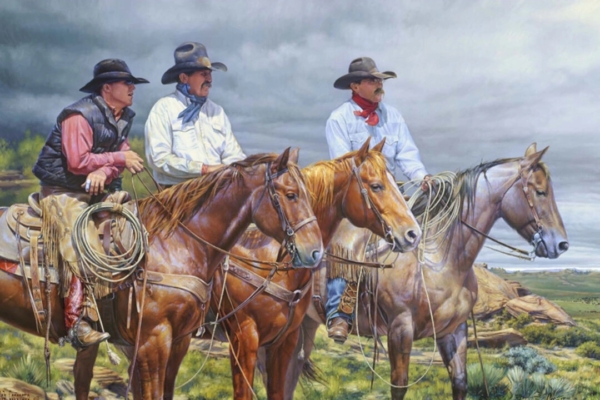In a remote town called Hulett, Wyoming, the rustic oil painting studio of cowboy artist Bob Coronato may seem more “Western” than the actual West itself. With its facade resembling a saloon adorned with sun-bleached cow skulls and wagon wheels, the studio serves as a true-to-life antique museum where the artist intricately captures the spirit of the West on canvas.
Coronato’s artistry is inherently rooted in genuine Western style, much like the studio itself. “When you’re painting, in a way, you’re already there,” Coronato told Epoch Times. “You have to create that little wooden post fence. You have to create that small fictional facade building. And when you finish the painting, you almost live in that painting.”
Growing up in New Jersey, Coronato had no initial ties to cowboy culture. However, in his early twenties, driven by a lifelong passion for Western art, he intentionally moved to cowboy country, immersing himself as a ranch hand in Wyoming. For Coronato, authenticity in his artworks was paramount. He chose to stay in Wyoming, calling it “home,” and has lived there for thirty years.
“This is my home,” he said. “When I came to Wyoming, I realized, especially in this part of Wyoming, that era hadn’t gone away. It was still completely intact.” Referring to cowboy culture, he added, “Cowboys are running through town, and you’re out there in the remote wilderness.” He emphasized the sense of community, likening it to living in the past.
Inspired by an experienced and resilient old cowboy he knew, Coronato delved into capturing the essence of cowboy life through his artistry. His experiences with real cowboys surprised him, as they were more introspective and closer to nature than he had imagined. Through his painting “June 9 in the Black Hills,” he tells the tale of a cowboy’s premonition of changing weather that led to an unexpected trek through snow-covered terrain.
Coronato’s deep connection with cowboys began in his childhood, portraying them in his art from a young age. His interactions with cowboys over the years provided him with a wealth of material and real-life experiences to draw upon. With each summer, he would wake up at 3 am to drive herds to mountain pastures, learning the ways of cowboys, their language, and the skill of cattle herding.
His artistic style, reminiscent of Charlie Russell’s works, has blended seamlessly with cowboy aesthetics. Although his pieces fall under realism, Coronato’s technique sets him apart. He meticulously works across the canvas in a continuous manner, akin to a printing press, starting from the top left corner and methodically progressing to the bottom right until the entire piece is complete.
Coronato’s assimilation into cowboy culture also led him to interact with local Native Americans in Wyoming. A notable encounter with activist Russell Means inspired Coronato to create a poignant painting, now on display at the Smithsonian’s National Portrait Gallery. Through his art, he captures the stories etched on faces and the essence of a way of life long cherished in the American West.
As Coronato continues to preserve the legacy of cowboys through his art, he remains rooted in the authentic cultural experiences that have shaped his work. The essence of the old West lives on through his paintings, a testament to his dedication to immortalize the spirit of the West in his timeless artworks.

